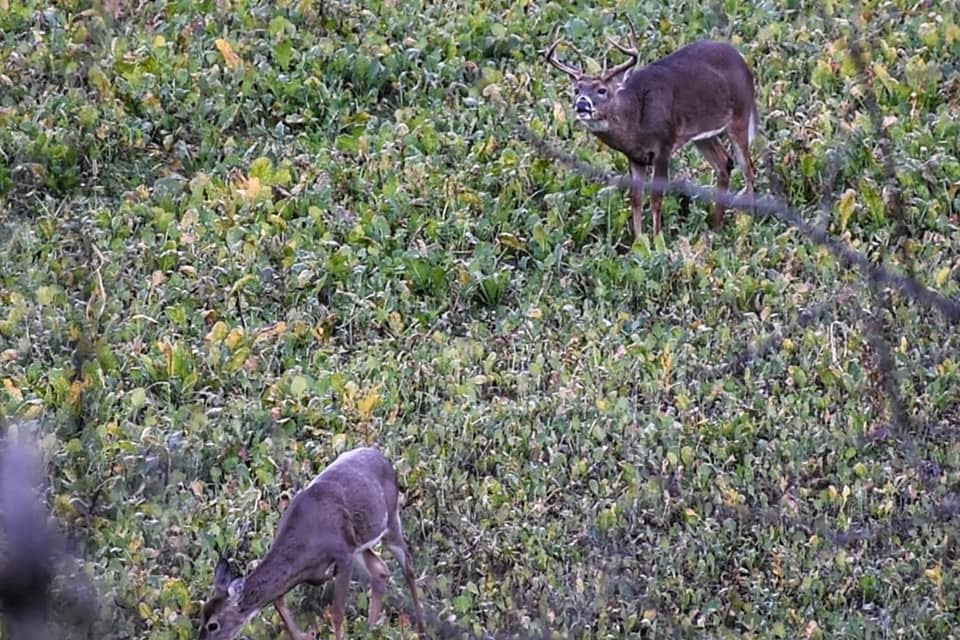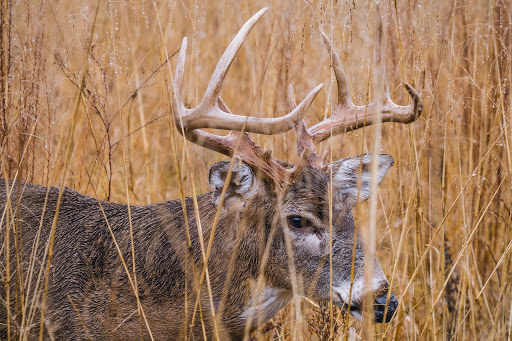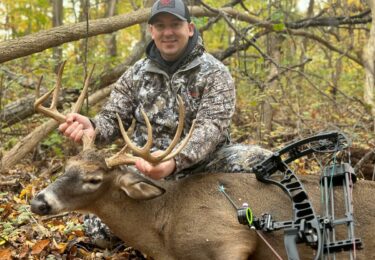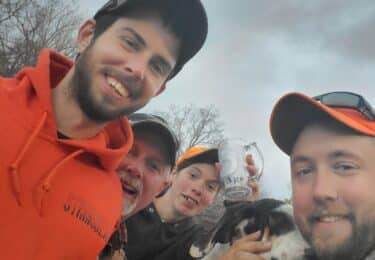Now onto everyone’s favorite topic Reproduction. The pre-rut, rut and post rut can be a magical time to be in the woods and can be the most frustrating. This time of year is typically when deer movement is at an all time high especially for bucks. I’m going to break down these times and try to show you a different aspect to this time of year.
Breaking down the Pre-Rut
Pre-rut means a lot of different things to a lot of different people. I like to keep things simple and try not to overthink animal processes. The way I look at the pre-rut is that this is the stage that bucks are starting to setup their breeding territories. You will start to see sign like scrapes, rublines and signpost rubs. Travel patterns for bucks completely revolve around this but you don’t want to throw out the other three topics we covered.
Movement to food obviously still occurs but a buck will stop and hit a scrape at an intersection of that travel corridor to and from bed to food or food to bed depending on the time of day you’re hunting. These locations can be hotspots under the right circumstances. For example in a heavily pressured state or area, am I going to expect a lot of daytime movement over a scrape on the edge of an open feeding area, certainly not! In an area with little pressure hunting over a scrape on the edge of a food source even and open food source can be a great tactic. Inversely relate the amount of daylight deer movement to the amount pressure the deer receive. If you’re in a heavily pressured area locate active scrapes and rubs close to bedding areas.
The Chasing Phase
The chasing phase of pre-rut is the most exciting time to be in the woods as a deer hunter. This typically occurs during the later part of pre-rut. What is occuring at this time is bucks have deserted their typical routine of bed to food and back to now, I’m ready to breed where are the does at?
Depending on your deer density and age structure, I’ve seen chasing occur from October 24th and run until November 11th here in Pennsylvania. This time frame accounts for a lot of tags being filled but can also be frustrating having a buck zoom by you chasing a doe.
The Rut
I define the rut as the week of peak breeding activity. Not sure when peak breeding activity is you can typically look this information up for your home state or any state that you might be hunting. Here in Pennsylvania our peak breeding date is November 17th, our game management agency has concluded this date to be peak breeding from fawn drop surveys. So November 14th through the 20th is what I would consider the rut. Deer movement is very hit or miss during this time frame I’ve found.
Does are ready to breed and a buck that is with a doe will stay with that doe and only move when she moves. This is often times called lockdown and if you have a high doe density buck movement can almost seem nonexistent. When hunting this time frame your best odds for success are getting tight to doe bedding areas or food sources very close to doe bedding areas. If this tactic doesn’t seem to be working out I’ve also found bucks to corral a hot doe to a small woodlot or a thick patch of timber away from other deer till he breeds her and then moves onto the next doe.
The Post Rut
This is another great time to be in the timber. Bucks specifically mature bucks that have a couple breeding seasons under their belts as well as winters know that the majority of the does have been bred and it’s time to start focusing on recovery. This time frame is typically the last week of November and runs until the 2nd week of December.
 Why is it called the post rut if bucks are just going back to their normal travel patterns of bed to feed and back. Again in areas where there’s an unbalanced buck to doe ratio a good amount of does can go unbred during the normal breeding time frame and comeback into heat during this time. Does also know that winter is coming and it’s time to start packing the carbohydrates to get ready for a hard winter.
Why is it called the post rut if bucks are just going back to their normal travel patterns of bed to feed and back. Again in areas where there’s an unbalanced buck to doe ratio a good amount of does can go unbred during the normal breeding time frame and comeback into heat during this time. Does also know that winter is coming and it’s time to start packing the carbohydrates to get ready for a hard winter.
Finding high quality food is extremely advantageous when hunting during the post rut. Acorns, corn and turnips like I mentioned in the food section, provides a lot of carbohydrates for deer and these locations will pack in all the deer. These locations are also great spots to catch does that may have not been bred during the regular rut and bucks will hit these food sources during daylight to potentially get on a late doe.
If you missed any of the previous articles here is the place to start https://cervicide.com/be-more-successful-deer-hunting-with-these-5-steps/
To see more of what Toren has going on you can follow him on his IG @the_wild_rambler
To get all the happenings at Cervicide follow us on YT @Deerslayer TV and IG @Cervicide
Be sure to checkout our Podcast The Whitetail Theories Podcast wherever you get your podcasts!




